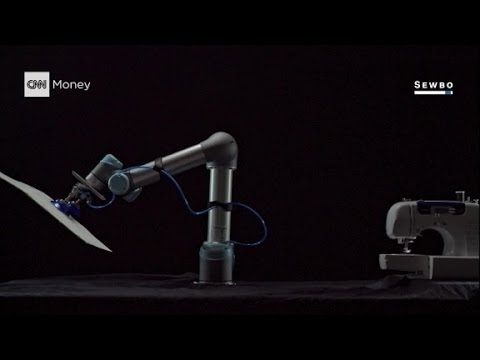# Sewbo: Revolutionizing the Garment Industry with Industrial Robots
Industrial Robots in Manufacturing have transformed countless industries, streamlining processes and increasing productivity. One of the latest innovations in this field is Sewbo, a groundbreaking robotic sewing arm that is revolutionizing the garment industry. In this article, we will explore how Sewbo is shaking up the traditional manufacturing methods, eliminating the need for human labor, and paving the way for a new era in clothing production.
The concept of Sewbo is simple yet brilliant. By combining cutting-edge robotics, computer vision, and advanced algorithms, this automated system can manufacture clothing from start to finish without any human intervention. This technology has the potential to significantly reduce costs, increase efficiency, and minimize errors in the garment production process.
Watch a robot sew a shirt from start to finish, and you will be amazed at the precision and speed at which the robotic arm operates. The Sewbo system feeds fabric into the machine, which then proceeds to cut, sew, and finish the garment without any assistance. The robotic arm is equipped with sensors that allow it to detect and adjust to different fabrics, ensuring consistent stitching quality regardless of the material being used.
Traditional garment manufacturing involves numerous manual labor-intensive tasks that are prone to human error. By eliminating the need for human labor, Sewbo minimizes the chances of mistakes, resulting in a higher quality final product. Furthermore, the robotic arm can work around the clock without getting tired, ensuring uninterrupted production and faster turnaround times.
One of the key advantages of Sewbo is its ability to adapt to changing fashion trends and customer demands. In the fast-paced fashion industry, staying ahead of the curve is crucial, and Sewbo enables manufacturers to do just that. With its flexibility and efficiency, this automated system can quickly switch between different garment designs and styles, allowing for rapid prototyping and customization.
Moreover, the use of industrial robots in clothing production brings with it several sustainability benefits. Traditional manufacturing methods often involve excessive waste due to errors or incorrect measurements, leading to discarded fabric and high material consumption. Sewbo’s precise stitching and accurate cutting significantly reduce fabric waste, making the process more environmentally friendly.
While Sewbo presents numerous advantages for the garment industry, it does raise questions about the future of human workers in this field. As this technology continues to advance, it is inevitable that some traditional manufacturing jobs may be replaced by automated systems. However, it is important to note that Sewbo is not intended to replace humans entirely. Instead, it aims to enhance and augment the existing workforce, freeing up human workers from repetitive and mundane tasks and allowing them to focus on more creative and complex aspects of garment production.
As with any disruptive technology, widespread adoption of Sewbo will also require substantial investment and training. Garment manufacturers will need to invest in the necessary infrastructure, including the robotic sewing arms and the accompanying computer vision systems. Additionally, employees will need to be trained in operating and maintaining these machines to ensure optimal performance and efficiency.
Looking ahead, the future of the garment industry seems promising with the integration of industrial robots like Sewbo. As this technology continues to evolve, we can expect to see faster production times, increased customization, reduced costs, and improved sustainability. While there may be challenges and adjustments along the way, the potential benefits are undeniable.
In conclusion, Sewbo’s robotic sewing arm represents a significant step forward in the use of industrial robots in manufacturing. By automating the garment production process, this technology offers improved efficiency, higher quality products, and enhanced customization possibilities. While the integration of Sewbo may require adjustments in the industry and the workforce, the potential benefits for the future of fashion and the environment make it a truly exciting innovation. The era of robotic garment manufacturing is upon us, and the possibilities are limitless.
Industrial Robot
“From Start to Finish: Witness a Robot Seamlessly Crafting a Shirt, Revolutionizing Manufacturing”


